#V面
Explore tagged Tumblr posts
Text







TEN [ STUNNER - The 2nd Mini Album ]
STUNNER / Enough For Me / BAMBOLA Sweet As Sin / Waves / Butterfly
81 notes
·
View notes
Text
.O_O.
~Brief descriptions of the animation process below the cut~

First pass with testing out the placements and eye darts first. I edited his eye shape a lot after this coz it was too big here xD His tattoo isn't properly masked as well yet
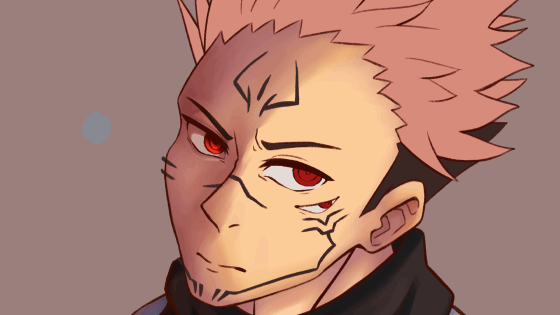
Second pass with the new eye shape >u< Testing out his smaller eye in this and making sure the pupil doesn't clip through his smaller eyelids

Third pass, eye squinttsss. I don't use plugins for my animation though, I just brute force it via a combo of position, rotation and puppet pins xD
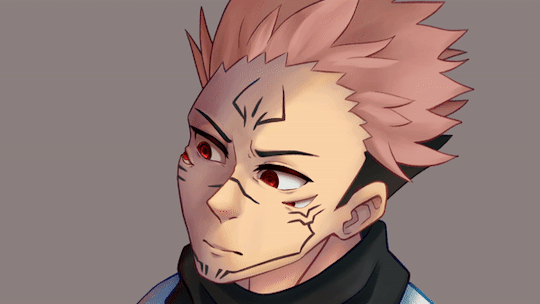
Fourth pass with more detailed and subtle eye movements. If you squint and stare hard enough you can actually see subtle deformation for his eyelashes to have a smoother animation with the delays and drag
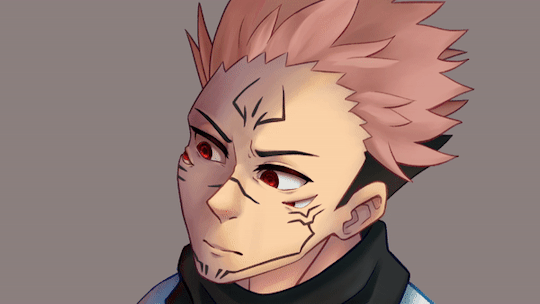
Fifth pass, I gave him a subtle up and down movement with his body as if from breathing but you can't really see it unless you've been staring at it as long as I have xD But it does help subconsciously to not make him feel as static. Bigger head movement for this too where he shifts position. Started parts of his hair animation too. There's puppet pins as well in his hair to do the wave motion for it alongside rotations.
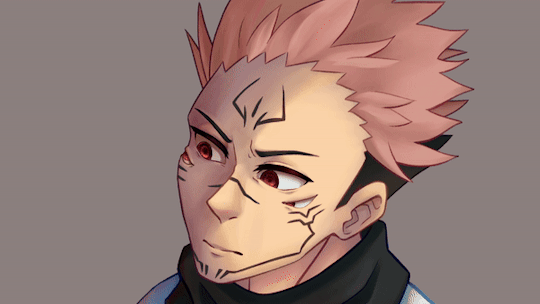
Sixth pass, wheeee he got all his fluffeh hair moving x3 I animated each strand to be on the same timing first then slowly offset the keyframes one by one so that they all move on different timings for it.
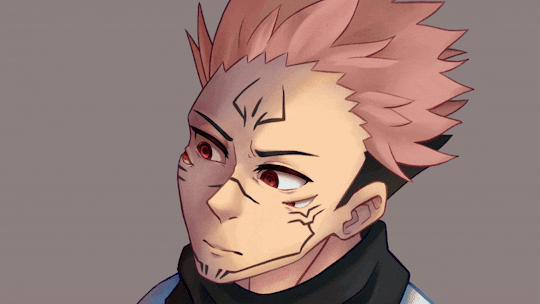
Seventh pass, last WIP pass I saved before the completed one. He got yet another expression shift for this. I'm pretty happy with how he's quite flexible in his expressions from just manipulating the puppet pins and my many many layers to built him xD Annddd that's all, thanks for reading >u< / <3

Bonus note, animating in After Effects will eat your PC like nobody's business x'D 46GB just for the damn cache omggggggg It was worth animating Sukuna though~
#Ryomen#Sukuna#両面宿儺#JujutsuKaisen#呪術廻戦#jjk#digital#animated#gif#fanart#Chirpy-chi#I am so happy with the end results from this#I took a long hiatus from doing animations like these due to lack of time and energy#but man after seeing everything come together#it's a certain kind of satisfaction ;v;#ofc while I was animating I started questioning my life choices#as anyone who has tried animation probably does
63 notes
·
View notes
Text
continued | @aftapati
血妙 | had tsubaki not conviction behind her inquiry, those words would have assailed her with the sudden, all-encompassing ferocity of a thunderclap. it could have been a scathing remark to a woman of proper decorum, wrought by a man of such exacting standard and observation that truth became an instrument of destruction.
alright, it was still a little scathing.
“ come now , ” she laughed, a lilting sound meant to diffuse the sting. “ the sōtaichō may allow himself levity, but you and I both know he’s a cunning mind and a practised tactician. a little reactive for your tastes, perhaps, but there is a philosophy of calculated restraint. to follow in his footsteps wouldn’t be such a curse. ”
had she not already announced herself on playful, predictably irksome pretences, tsubaki might have ventured to share a drawn comparison: that aizen and kyōraku shared a rare, unnerving talent—the ability to craft façades so meticulous they shaped the perceptions of entire worlds. a talent for the false, yes, but also for the inexorable—for though their motivations diverged so profoundly, both harboured a relentless drive, an unflinching willingness to meet sacrifice head-on and make it yield.
“ but no, I come entirely of my own volition . ” she pivoted, taking a seat— a sign that not only at her refusal to be dismissed but her intention to press further.
“ I ask , ” she continued, her tone slipping into something more measured, “ because you're a man of progress, and the coming of the new year is a time to reflect on the breadth of one’s achievements and plan those yet to come. ” she tilted her head slightly, threads of black hair spilling against her cheeks with a softness that contrasted the precision of her inquiry. the shift in her perspective of him yielded nothing of his flawless impassiveness. though, she supposed, he did have a wonderful jawline. at least that part of him wasn’t illusionary.
“ then again, ” she mused, exhaling softly as though the realisation pained her, “ a mind like yours is always calculating, isn’t it? always reflecting, always planning... ” the defeat was visible in her shoulders, though a glimmer of amusement tugged at her mouth.
“ damn, ” she murmured, her tone both resigned and faintly self-mocking. “ I thought I had a good one there. ”
she lingered, as though daring him to say something—anything. but the silence was steadfast, and she couldn’t tell if it was deliberate or if he truly found her efforts beneath his notice. either way, she leaned back, a smile breaking through her faux disappointment.

“ alright, fine, ” she conceded. “ maybe I was trying to be a little troublesome . ”
#aftapati#v. 二面性 nimensē ( duality )#arc. 千年血戦後編 sennen kessen go-hen ( post-thousand year blood war )#( i blame new years sake )
9 notes
·
View notes
Text
【Stardust Original】 《回声空间站/Echoic Space Station No. 13》
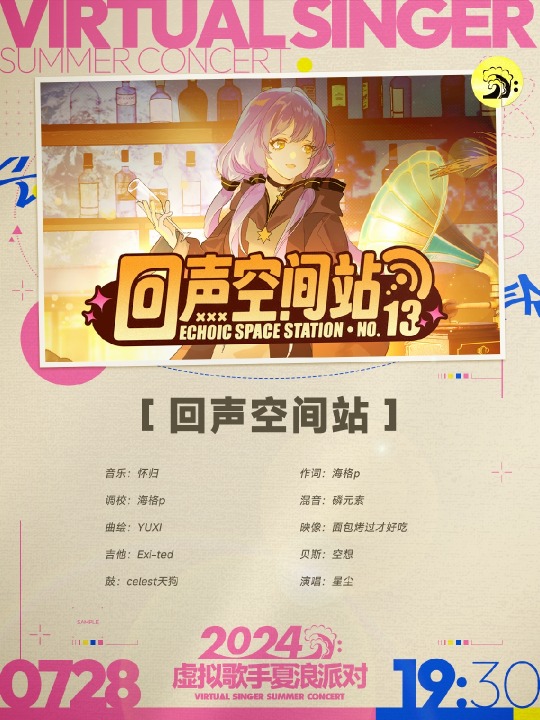
────────────── ⋆⋅ ⋅⋆ ──────────────
Planning : 金蓝
Music:怀归
Composing/Tuning:海格p
Mixing:磷元素
Illustration:YUXI
PV:面包烤过才好吃了
Guitar:Exi-Ted
Bass:空想
Drum:celest天狗
Vocals : Stardust Infinity
#Virtual Singer Summer Concert#五维介质#MEDIUM5#Quadimension#SynthV#Synthesizer V#星尘#Stardust#星尘Infinity#Stardust Infinity#Music#Original#Bilibili#Artist: 金蓝#Artist: 怀归#Artist: 海格p#Artist: 磷元素#Artist: YUXI#Artist: 面包烤过才好吃了
7 notes
·
View notes
Text
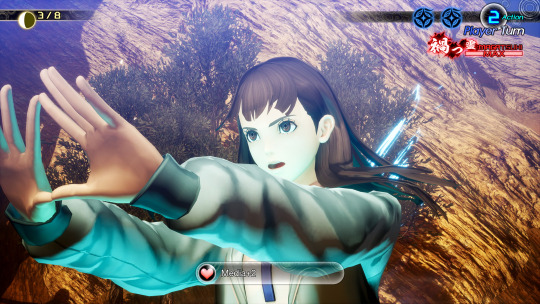
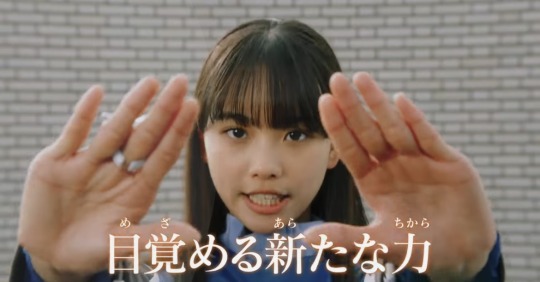
Rinne Kudo found in SMT V Vengeance
9 notes
·
View notes
Text
youtube
#daily voca recs#vocal synth#kiri shimentai (producer)#霧四面体 (producer)#kasane teto (vocal)#synthesizer v#synthv#utau#follower submission#(I’m glad someone recommended this because Kiri Shimentai is one of my favorite producers and this duet is delightful ❤️)#Youtube
4 notes
·
View notes
Text
by 马孩不能救人👌 @ 39500926200
another video of the 229 bug 😂
#douyin#tiktok#identity v#idv#idv bug#idv 229 bug#给他一个bug,他能在bug里面左一个游戏#antiquarian#马孩不能救人👌#39500926200
4 notes
·
View notes
Text
韓國保養品牌/MEDITHERAPY V臉緊緻系列-頂級抗老成分六胜肽+超高延展性的彈性水凝膠纖維面膜聯手加乘真的很給力,讓V臉緊緻按摩乳霜&V臉緊緻提升面膜參與日常護膚,使居家保養更加全面~美妝保養/韓妝保養/藍子愛保養
韓國保養品牌/MEDITHERAPY V臉緊緻系列-頂級抗老成分六胜肽+超高延展性的彈性水凝膠纖維面膜聯手加乘真的很給力,讓V臉緊緻按摩乳霜&V臉緊緻提升面膜參與日常護膚,使居家保養更加全面~美妝保養/韓妝保養/藍子愛保養 本文網址 https://haylei.info/?p=36608 人不可能永遠不變,肌膚狀態亦然,從25歲後,膠原蛋白會隨年齡增長而逐漸流失,有了一定年紀,真的會很擔心地心引力對肌膚的影響~ 以藍子來說,當看到自己的臉部因為下垂而有了垮感,雙下巴日益明顯時,難免會感到有點沮喪QQ 因此,藍子最近對於抗老類的保養有了濃厚興趣,剛好看到MEDITHERAPY新推出了V臉緊緻系列,就決定入手來用看看~ MEDITHERAPY的V臉緊緻系列包含了V 臉緊緻按摩乳霜跟V 臉緊緻提升面膜,以藍色為基礎的包裝十分吸睛呢! V 臉緊緻按摩乳霜 MEDITHERAPY的V…
0 notes
Text






























0 notes
Text
Kamen Rider Geats: Jyamato Awakening Gets A New Visual
Kamen Rider Geats: Jyamato Awakening Gets A New Visual! #仮面ライダーギーツ #KamenRiderGeats #KamenRider #Movies #Tokusatsu
Three months ago, it was announced that Kamen Rider Geats would be getting a brand-new V-Cinext film titled Kamen Rider Geats: Jyamato Awakening. Recently, a brand-new trailer was released along with a new visual that teases the appearance of Future Ace (Hideyoshi Kan), Queen Jyamato, and Kamen Rider Doom Geats. The film is supposed to take place after the final episode of the series, and Kamen…
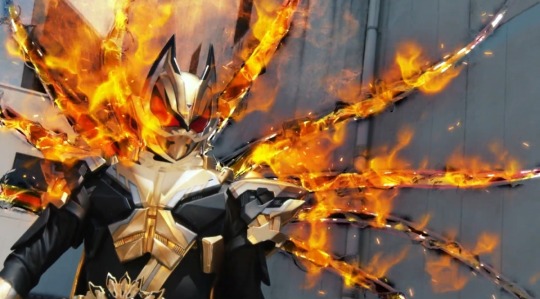
View On WordPress
#Entertainment#Kamen Rider#Kamen Rider Geats#Kamen Rider Geats: Jyamato Awakening#Movies#Superheroes#Toei Co. Ltd#Tokusatsu#V-CINEXT#仮面ライダーギーツ
0 notes
Text







TEN [ Japan 1st Mini Album - Humanity ]
Flash / Silence / Burn It Up All Good / Living Now / 夢の続き
2 notes
·
View notes
Note
Touches the back of her neck with his cold Fingies.
unprompted | always accepting

“ SHITFUCK—!! ”
she spins around.
“ h-hitsugaya-taichō !? ”

“ i’m so sorry please forgive my inappropriate language it will never happen again that was so rude of me there is no excusing such inexcusable behaviour i was startled i don't know what came over me i should be more vigilant if there is anything i can do to make amends pleasedon'ttellmylieutenant— ”

#ryusxnka#- verse. 二面性 nimensē ( duality )#answered.#arc. unknown#v. shitposting#( THANKS I LOVE HIM )#mun art.
8 notes
·
View notes
Text
無限迷路 【PV付】
Composition/Arrangement/Bass:空想纪录
Composing : 涅芙
Guitar:王尧GT
Tuning:硫叶立德_NA
Choir:天野柚AmanoYuzu
Mixing:kldlink
Illustration:非欢奥迪托雷,kotomeiro
PV: 面包烤过才好吃
Voice : Stardust
Special Thanks:怀归
#五维介质#MEDIUM5#Quadimension#SynthV#Synthesizer V#星尘#Stardust#星尘Infinity#Stardust Infinity#星尘2024诞生日#2024 Virtual Singer Songwriter Contest Entry#Music#Original#Bilibili#Artist: 空想纪录#Artist: 涅芙#Artist: 王尧GT#Artist: 硫叶立德_NA#Artist: 天野柚AmanoYuzu#Artist: kldlink#Artist: 非欢奥迪托雷#Artist: kotomeiro#Artist: 面包烤过才好吃#Artist: 怀归
1 note
·
View note
Text
血妙 | TSUBAKI STUDIED HIM, HER INTEREST SERENE YET PENETRATING. she, by nature, was a studious woman; curiosity a poetic companion to her adoration of life. thus, by virtue of her lyrical sensibility, she did not observe him like a zoologist might study a caged creature, nor with the veiled disdain of an adversary. no, there was something richer in her gaze—respect, visible in the depths of sanguine eyes. unhidden. clear, like the surface of water.
“ instinct and pride, ” she repeated softly, her voice low and even, as though testing the weight of his words in her own mind. they felt familiar. “ not so different from what drives most living things—though, for you, it seems more finely honed. sharpened by every fight you’ve endured, every moment you’ve survived when the odds were stacked against you . . . ”
her words were offered with lucidity, each syllable articulated with a clarity that felt almost casual, as if her words were as undeniable as the sun’s inevitable rise—in the world of the living and soul society, at least.
“ pride is not a terrible motivator, and wanting to become stronger isn’t inherently selfish, ” she continued, her posture softening as her thoughts unfurled. “ it’s self-improvement, refinement. many philosophies stress the virtue of understanding and mastering one’s own abilities and strengths—of striving, endlessly, for growth. ”

tsubaki leaned her chin upon delicately folded fingers, her elbow propped upon a bent knee. the ease in her posture now was in contrast to her earlier guardedness.
“ some might say there’s honour in that ~ ”

almost apologetic wasn't apologetic enough, but even if she'd outright groveled, it wouldn't have mattered. he'd have been annoyed by an apology and annoyed by a lack of one - there was no way to appease the man when he was agitated. but he hadn't tried to take her head yet, so that was something.
he offered a shark click of his tongue, attention shifting from her to back out at the scenery he'd come to watch. "You're shit at small-talk, apparently. Best you don't try it again." all he'd heard was her taunting him as gingerly as possible - a cowardly approach, he thought. you either taunt and face the consequences or you shut up. anything in-between made his skin crawl.. felt too familiar, and it was a familiarity he loathed. flattery, however...
he couldn't claim to not be prideful. of course he was. he'd damn well earned it, too, even if his pride was nothing new. and it was... refreshing, maybe? to hear someone recognize that he wasn't a being to take lightly. even if it was only honeyed words, he would twist them to sincerity through sheer spite - and pride. and for that, he actually considered her question.

"..Instinct, probably. There's always the itch in the back of my mind. That hollow hunger is gone - that drive to eat and evolve.. But the itch to fight, to find something worth challenging... The itch to become even stronger.. Maybe it's more like a habit left over from before I became bipedal again.. Maybe it's just part of bein' a Hollow. Maybe it's simply because of what I represent. But it's never gone away." he shifted to sit more upright, glancing over at her again.
"Course, it could always just be my pride."
11 notes
·
View notes
Text






























#海源郷#六連星昴#真珠星乙女#金剛杵円空#乙女星釈迦#水那月燕#江ノ島広海#江ノ島奏#江ノ島海音#観福宮()70]-[!|v|£#ハーデス#瞬#水面乃亭#水面乃ろとす#イア#クオ#黒サナ#ワサリ#ヴァジュラ・カーン
0 notes
Text
April 20, Beijing, China, National Museum of China/中国国家博物馆 (Part 4 – Chinese Historical Fashion Exhibition continued):
Alrighty, Ming and Qing dynasty fashion, here we go! Sit tight because this is an extra long post that took me a long time to research
First is this marvel, a replica of the phoenix crown/fengguan/凤冠 of Empress Xiaoduanxian of Ming (明孝端显皇后). The real artifact is in this museum, but it's probably not exhibited much for conservation reasons.

Phoenix crowns are the formal headwear for empresses, which according to etiquette rules set at the beginning of Ming dynasty (1368 - 1644), must have 9 dragons and 4 phoenixes (btw the original Chinese term is fenghuang/凤凰, which is a different mythological creature from the phoenix, but "phoenix" is the commonly used translation now), but this crown has 9 dragons and 9 phoenixes, indicating that etiquette rules have loosened and shifted by late Ming.
The phoenixes on this crown are blue because they were actually made with the iridescent feathers of kingfishers in a process called diancui/点翠. All species of kingfishers are now legally protected animals in China, so when buying hanfu accessories, you may come across "imitation diancui"/仿点翠, these are usually either made with enamel or dyed chicken or goose feathers. Another thing to note is the appearance of the jewels on this crown. Ming-era people liked keeping the jewels in a "natural look", so these jewels had no facets.

Recreations of Ming-era hanfu. Left is the semi-formal outfit of aristocrat women in mid to late Ming dynasty. Right is the casual outfit of late Ming scholars and literati. The woman's cone-shaped hairstyle is called a diji/䯼髻, and the set of hairpins that goes on a diji is called toumian/头面. She's wearing a type of top called an ao/袄 and a skirt aka qun/裙, specifically a mamianqun/马面裙, or "horse face skirt". Note that the bottom hem of an ao is not tucked into the skirt. The man is wearing a square-ish hat called a fangjin/方巾 and should also be wearing a wangjin/网巾 underneath (can be understood as a hairnet). He's wearing a daopao/道袍 and a hechang/鹤氅 on the outside.

Also I did make a mistake while dividing up the pictures for these two posts, some of the following artifacts are from earlier dynasties. Ugh if only I had time to take pictures of all the placards.
A pair of mojie/摩竭 shaped gold earrings from Liao dynasty (916 - 1125). Note that the placard says it's "摩羯形" or "Capricorn-shaped", but this apparently is sort of a misnomer? Sort of, because this representation should be of the makara (मकर; translated as 摩竭 in Chinese), a sea creature from Hindu mythology, but at the same time it is the equivalent of Capricorn in Hindu astrology. However since the name "Capricorn" stuck, it's now commonly referred to as "摩羯". 摩竭 and 摩羯 have the exact same pronunciation though.

A pair of phoenix (fenghuang) shaped gold hairpins from Liao dynasty:

After a lot of pulling my hair out researching, I finally found what time period this gold belt buckle came from. It's from Eastern Han dynasty (25 - 220 AD). The gold filigree and beads form the pattern known as panchiwen/蟠螭纹, where pan/蟠 and chi/螭 are both types of loong dragon in Chinese mythology.

The gold decoration on a xiapei/霞帔 (the V-shaped wide band in the diagram on the right) from Liao dynasty. Xiapei originated in Song dynasty (960 - 1279) as part of the formal attire of consorts, but later developed into a part of the formal attire for women in general. Xiapei also looked different at different time periods in history, but from Song-era to Ming-era, its structure didn't change by much.


Finally back to Ming dynasty. This is a gold cap inlaid with gems and pearls. From the size of this cap and the included hairpins, we can deduce that this cap is meant to encase the bun on the top of the head (the hairpins that go through the cap would hold it in place).

Like the gold cap above, the next few are all from the same tomb of a Ming dynasty noble, and they are all themed similarly--they all depict scenes in a heavenly palace. Of these, the first three that has miniature architecture in gold are parts of the toumian worn on a diji hairstyle. This first one is a pair of yanbin/掩鬓 (lit. "covering temples"), so called because they are worn on the sides, close to the temples.

This next one has some confusion regarding the naming. According to an article by the Chinese Academy of Social Sciences Institute of Archaeology, the top artifact is a fenxin/分心 and the bottom artifact is a tiaoxin/挑心, but according to 撷芳主人 (if you are a hanfu enthusiast you have probably heard of this person or seen their works, they are the one who drew the cute illustrations of Ming-era fashion), the top one may be a manguan/满冠, and the bottom one should be called fenxin/分心. Note that 撷芳主人's conclusion is mostly based on Ming-era records and novels. Regardless of the naming, the top one here should be worn on the base of the diji, and the bottom one should be worn at the front center of the diji.

This one also has some confusion in the naming, the Institute of Archaeology calls it a dingzan/顶簪, while 撷芳主人 calls it a tiaoxin/挑心. Again, regardless of the naming, this one is worn on the very top of the diji, so the hairstick portion goes straight down through the diji. If you look closely, you can even see people and animals in the details.

Left: a pair of gold phoenix (fenghuang) hairpins made in the 22nd year of the Yongle Emperor of Ming. Right: gold filigree bracelets inlaid with gemstones.


Ming-era portrait of a scholar official. Before cameras were introduced in late-Qing dynasty, portrait paintings were the most realistic depictions of what people looked like back then. Such portrait paintings mostly began in Song dynasty and continued through to Qing dynasty.

Illustrations of the different buzi/补子 (also known as "mandarin square") used by different ranks of officials in Ming dynasty. All ranks are organized from highest on the left to lowest on the right, top row is for civil officials, bottom row is for military officials, and bottom right is for nobility. All illustrations here come from the Ming-era illustrated encyclopedia Sancai Tuhui (《三才图会》). For those who are interested, a scan of Sancai Tuhui is available on Internet Archive for free (link goes to first chapter, most chapters are available).

Also from Sancai Tuhui Chapter 62 (all pictures here come from Ch. 62-64), illustrations of the twelve ornaments (called shierzhang/十二章) on a mianfu/冕服, which is the highest level of formal attire for an emperor in Ming dynasty. These twelve ornaments depict things including celestial bodies (note that sun contains the three-footed sun crow, and moon contains the moon rabbit), elements of nature, mythical creatures, and representations of life, and are supposed to represent the values and traits that an emperor should possess:

And wrapping up the section on Ming-era hanfu, here are the headwear of different classes of people in Ming dynasty, from commoners to the literati to important government officials.
Note the net-like hair accessory on the left. This is a wangjin/网巾 during Ming dynasty (illustration from Sancai Tuhui), and is worn by all men regardless of social class. However, wangjin is worn almost like an "undergarment", so it's almost always covered by something else. Which means all those historical cdramas set in Ming dynasty that have their characters wear only a wangjin in public are, in fact, inaccurate.

Some hats of commoners and scholars in Ming dynasty. Note the left one on the second row, that is the same hat worn by the Fox Scholar in the episode Goose Mountain of the animated series Yao Chinese Folktales (《中国奇谭》).

Some of the formal headwear of government officials in Ming dynasty. These are called liangguan/梁冠, lit. "beam crown", where the liang/"beam" refers to the metal arches that go over the top. The more liang there are on the hat, the higher the rank of the official.

And last but not least, Qing dynasty (1616 - 1911) fashion. Left is Qing-era men's outfit for horseback archery and hunting, called xingfu/行服. His hat is composed of two parts, the actual hat called dingdai/顶戴 (here it's specifically the winter version) and the back decoration made of horsehair and feathers that signifies status is called hualing/花翎. Back is the casual outfit of late-Qing Manchu noblewomen, with the characteristic hairstyle called dalachi/大拉翅, a vest called kanjian/坎肩, and a robe beneath called chenyi/衬衣. These are all considered part of qizhuang/旗装, or traditional Manchu clothing. On the right is the late-Qing casual outfit of upper class Han women, with an ao/袄 top and a langanqun/阑干裙 skirt (a type of mamianqun/马面裙), and a headband decorated with pearls called mo'e/抹额. Note that although the exact origin of the modern qipao/旗袍 is disputed, it definitely has elements from at least one of the following: the Manchu chenyi, the Han ao, and the late Qing and early Republic era men's changshan/长衫.

A little historical background on why this particular display is arranged in this way. In early Qing dynasty, the Manchu ruling class enforced the policy of 剃发易服 (lit. "shaving hair and changing clothing") specifically on Han men in order to force conformity to Manchu traditions in terms of hairstyle and clothing, but Han women were not included in this policy. So in early Qing, Han women still wore the same clothing as they did prior in late Ming, but over the time the fashion of Han women absorbed many elements of Manchu fashion. However, this wasn't a one-way influence. By late Qing, many elements of Han fashion were adopted by Manchu fashion as well, so this influence really went both ways. Today, Manchu people is one of the 56 officially recognized ethnicities in China (4th largest ethnicity by population), and the traditional fashion of Manchu people is a part of the diverse culture of modern China.
Below is a real example of a chenyi, chenyi were popular among Qing dynasty imperial consorts as informal dress:

The hairstyle of Manchu women (called qitou/旗头) at different times during Qing dynasty. The one at the far right was what early qitou looked like, while the one on the far left appeared in late-Qing. The two hairstyles on the left frequently appear in period dramas set in Qing dynasty.

A belt called jifudai/吉服带 with pouches and decorations. Jifudai is so named because it's supposed to be worn with the semi-formal jifu/吉服 outfit. This particular jifudai is yellow, a color reserved for the emperor.

Real examples of Qing-era Han women's outfit, with an ao on the left, and a langanqun on the right. Langanqun is a type of mamianqun, but the construction is different from Ming-era mamianqun, in that langanqun is made from numerous rectangular and trapezoidal pieces of fabric sewn together into two larger pieces, whereas Ming-era mamianqun are simply two large pleated pieces of fabric. The way these skirts are decorated are also somewhat different. Visually speaking, Qing-era langanqun have woven and/or embroidered patterns that are arranged vertically, creating a "paneled" look, whereas Ming-era mamianqun have woven and/or embroidered patterns that repeat and extend horizontally as to wrap around the entire skirt.

Aaaaand that's it for this exhibition! Phew. I highly recommend everyone go visit the free virtual exhibition (link here), partly because when I visited the National Museum of China, I was in a huge hurry (I only had one day to see everything), and so the task of taking pictures of the exhibition was split between me and a family member, but I'm not sure they understood how many pictures I wanted....so what's in my posts here are only a very small portion of the actual exhibition. The actual exhibition doesn't just have artifacts and replicas of artifacts, but also have paintings and real articles of clothing from Qing dynasty, which were all amazing to look at.
#2024 china#beijing#china#national museum of china#historical fashion#historical clothing#chinese historical fashion#hanfu#chinese hanfu#manchu fashion#fashion history#chinese history#chinese culture#history#culture
128 notes
·
View notes